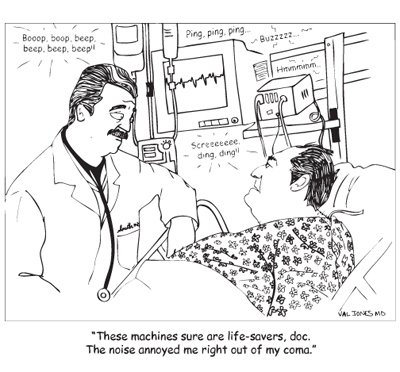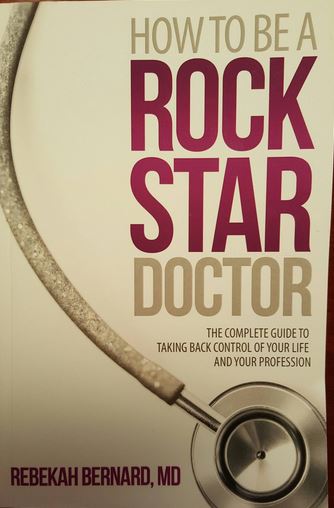October 9th, 2011 by ChristopherChangMD in Research
No Comments »

 In one of the stranger research projects I’ve encountered in awhile, French scientists reported on why in the sport of discus throwing, athletes tend to feel more dizzy than those who hammer throw.
In one of the stranger research projects I’ve encountered in awhile, French scientists reported on why in the sport of discus throwing, athletes tend to feel more dizzy than those who hammer throw.
Whether discus or hammer throwing, both require spinning on part of the athlete before letting the discus/hammer go for long distances.
59% report dizziness with discus throwing, but none with hammer throwing. Why?
This occurred even among athletes who did both sports eliminating individual susceptibilities to dizziness.
Based on slow-motion video analysis, it was conjectured that Read more »
*This blog post was originally published at Fauquier ENT Blog*
April 1st, 2011 by John Mandrola, M.D. in Health Tips, True Stories
2 Comments »

My neighbor Ed was a thin man all his life. He maintained an ideal body weight by combining regular physical activity with a modest intake of calories. He was a “young” seventy year-old who looked the picture of heart health.
Ed regularly read the newspaper while walking on his treadmill, he hit a golf ball straighter and longer than his peers, and he wore the same size jeans now than he did in college 50 years ago. What’s more, he bragged about his low blood pressure, normal cholesterol level and perfect blood chemistries. He took no pills. I think he went to his primary care doctor each year just to show off his health.
The morning he woke with crushing chest pressure and shortness of air stunned him. “This couldn’t be a heart attack?” he thought. An hour later, minutes after his urgent heart catheterization showed severe blockages in all three of the main coronary arteries, a sternal saw provided a heart surgeon access to his dying heart.
Ed did well. The story had a happy ending. He still looks the picture of health, but now there’s a scar on his chest and a few pill bottles in his medicine cabinet.
How can a human who exudes heart health go to bed well and wake up with severe heart disease? What’s missing? What could Ed have done differently? Could his doctors have measured anything—over and above the traditional risk measures—that might have suggested his obviously higher cardiac risk? Read more »
*This blog post was originally published at Dr John M*
March 5th, 2011 by Dr. Val Jones in True Stories
1 Comment »
 In medicine we’re often reminded not to base our therapy solely on lab test results. Although it’s tempting to reduce patient care to a checklist of “normal” bloodwork targets, we all know that this is only a fraction of the total health picture. Today I made a mistake that brought this truism home: “Don’t treat the number, treat the patient.”
In medicine we’re often reminded not to base our therapy solely on lab test results. Although it’s tempting to reduce patient care to a checklist of “normal” bloodwork targets, we all know that this is only a fraction of the total health picture. Today I made a mistake that brought this truism home: “Don’t treat the number, treat the patient.”
I’m turning 40 this year and decided to make an ambitious fitness goal for myself — to be in better shape at 40 than I was at 30. No small feat for a person who used to be in good form a decade ago (not so much now, ahem). So, I joined a gym owned by an affable triathlete and invited her to make me her project. Let’s just say that Meredith believes that one piece of sprouted grain bread is the breakfast of champions — and with that she has me doing many hours of cardio sprints and strength training every week. I’m still alive. Barely.
Today in my endurance spinning class (an unusual form of torture where you get yelled at — I mean encouraged — on a stationary bicycle for an hour and a half in a dark room filled with high-decibel rock music and sweaty co-sufferers), I was somewhat alarmed by my heart rate. I was taught in medical school that one’s maximum heart rate is 220 minus your age. So mine should be about 180. I assumed that anything higher than that was incompatible with life.
So when I saw my heart rate monitor rise to 185 on a steep climb at maximum speed, I wondered if I might be about to die. I certainly felt physically challenged, but not quite at death’s door, so I looked around sheepishly at my nearest peer’s monitor to see if she was handling the strain any better. Nope, she was also at 185. “Gee, what a coincidence,” I thought. “We must be exactly the same fitness level.” Read more »
 In one of the stranger research projects I’ve encountered in awhile, French scientists reported on why in the sport of discus throwing, athletes tend to feel more dizzy than those who hammer throw.
In one of the stranger research projects I’ve encountered in awhile, French scientists reported on why in the sport of discus throwing, athletes tend to feel more dizzy than those who hammer throw.



 In medicine we’re often reminded not to base our therapy solely on lab test results. Although it’s tempting to reduce patient care to a checklist of “normal” bloodwork targets, we all know that this is only a fraction of the total health picture. Today I made a mistake that brought this truism home: “Don’t treat the number, treat the patient.”
In medicine we’re often reminded not to base our therapy solely on lab test results. Although it’s tempting to reduce patient care to a checklist of “normal” bloodwork targets, we all know that this is only a fraction of the total health picture. Today I made a mistake that brought this truism home: “Don’t treat the number, treat the patient.”







